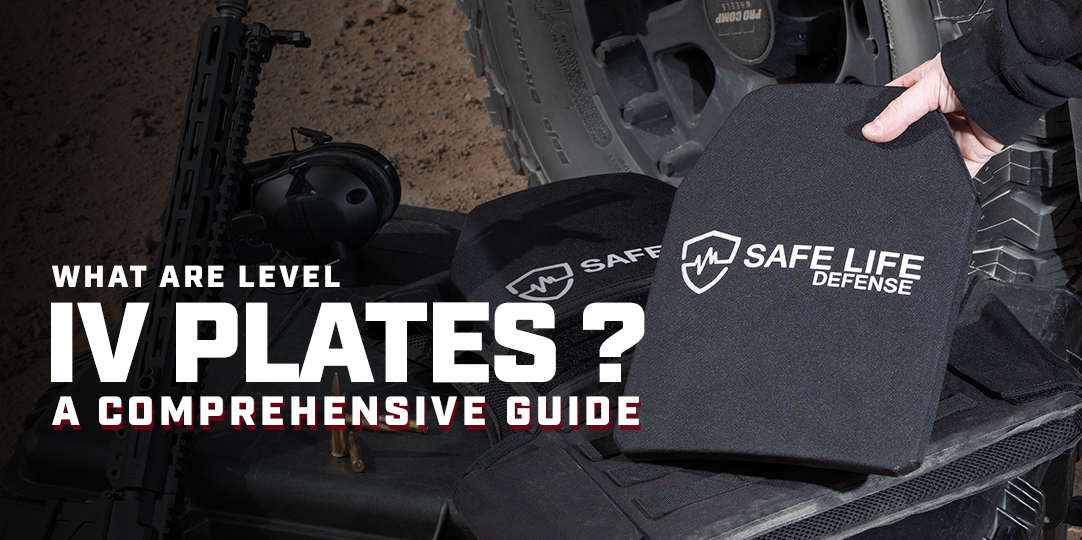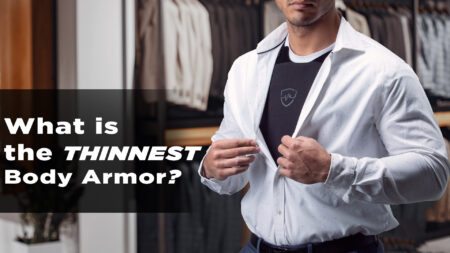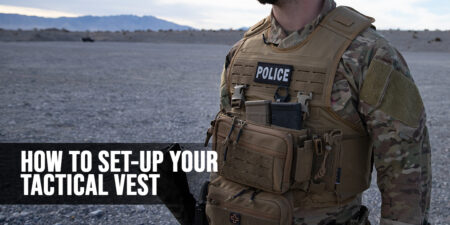What are Level IV Plates? A Comprehensive Guide
“By failing to prepare, you are preparing to fail”
-Benjamin Franklin
In an era where personal safety is priority number one, body armor can be the difference between life and death, especially when facing life threatening scenarios.
Regarding body armor, the National Institute of Justice (NIJ) is the ruling body for what armor is rated to protect against. The NIJ is an agency responsible for setting standards for ballistic protection in the United States. A variety of different levels of protection are set and recognized by the NIJ. These levels will range from level II to level IV, with level II being the minimum level of protection that the NIJ will recognize as body armor, only protecting against your standard 9MM, .38 Special and .357 magnum threats. Level IV body armor, the highest-rated armor recognized by the NIJ, is designed to offer unparalleled defense against high-velocity rifle rounds, including armor-piercing projectiles like .30-06 M2 AP(“black tip”). However, not all Level IV armors are created equal. We will explore some intricacies of Level IV body armor, its composition(s), testing standards, and its significance in safeguarding those who depend on it.
NIJ Standards for Level IV Armor
The NIJ Standard-0101.06 is the primary document that outlines the testing requirements for body armor, including Level IV plates. This standard provides clear guidelines for manufacturers, testing laboratories, and users to ensure consistency and reliability in ballistic resistance. It covers various aspects of body armor testing, including the selection of test ammunition, velocity requirements, environmental conditioning, and measurement of back face deformation (BFD).
The NIJ Standard-0101.06 specifies the types of ballistic projectiles used during the testing process. For Level IV plates, the selected projectiles include armor-piercing .30 caliber M2AP(black tip) rounds. These rounds are known for their ability to penetrate steel and other materials. To test the ballistic resistance of Level IV plates the selected projectiles are fired at a specific velocity.(2880ft/s ± 30ft/s) This velocity is typically higher than those used for lower-level plates, ensuring that Level IV plates can withstand the impact of high-velocity armor-piercing rifle rounds.
During the testing process, Level IV plates undergo a series of rigorous conditions to simulate real-world scenarios. The plates get exposed to adverse environmental conditioning, including variations in temperature and humidity. These conditions help evaluate the armor’s ability to maintain its ballistic performance in different environmental settings, ensuring its effectiveness even under the most challenging circumstances.

One crucial aspect of Level IV plate testing is the measurement of backface deformation (BFD). Backface deformation (BFD) refers to the indentation or deformation that emerges on the side opposite to the point of impact when armor gets struck by a projectile. The NIJ establishes strict limits on the maximum allowable BFD to minimize the risk of injury to the wearer. Level IV plates must meet the specified BFD requirements(Avg BFD<44mm) to ensure the armor provides effective protection without causing excessive trauma.
Manufacturers of Level IV plates are required to submit their products to an NIJ-approved laboratory for compliance testing. These tests get conducted to verify whether the plates meet the stringent NIJ Standard-0101.06 requirements. If a plate successfully passes all the prescribed tests, it receives NIJ certification, indicating that it meets the specified standards for Level IV ballistic protection.
The NIJ testing standards for Level IV plates were designed to ensure uncompromised ballistic protection for those operating in high-risk environments. By adhering to the guidelines outlined in the NIJ Standard-0101.06, manufacturers can produce Level IV plates that have undergone rigorous testing, including projectile selection, velocity requirements, environmental conditioning, and backface deformation measurements. As a result, Level IV plates provide users with the confidence and peace of mind that they are getting equipped with armor that meets the HIGHEST level of ballistic resistance standards set by the NIJ, thereby enhancing personal safety and survivability in the face of powerful rifle threats.
Level IV armor provides enhanced security compared to lower-level armor options, making it ideal for law enforcement personnel, military personnel, and individuals who require advanced ballistic protection.
Level IV body armor, specifically engineered to stop armor-piercing rifle projectiles, such as the .30 caliber M2 armor-piercing round(.30-06 M2 AP). For armor to be able to stop these armor-piercing ammunitions, the armor is typically composed of a combination of materials. Materials like ceramics or composite materials get used with additional backing materials to dissipate and absorb the impact energy. Some manufacturers layer these materials together to make a standalone level IV plate. Other manufacturers make level IV ICW plates that tend to be composed of solid ceramic/composite materials. These ICW plates must be used in conjunction with (ICW) a level IIIA plate backer. Taking note of these constructions is crucial in preventing the bullet from penetrating the armor and causing harm to the wearer. When you see Level IV ICW, this means that to receive complete Level IV protection you MUST have at least a IIIA backer
Benefits of Level IV Body Armor
The primary benefit of Level IV body armor is its exceptional ability to defeat armor-piercing rifle rounds. This high level of protection instills confidence in those who wear it, particularly in situations where encountering powerful firearms is likely. Level IV body armor offers superior ballistic resistance and can significantly reduce the risk of injury or fatality in life-threatening scenarios.
However, it’s important to note that Level IV body armor is heavier and less flexible when compared to lower-level armor options. Including ceramic/composite materials in armor required to stop armor-piercing rounds increases the overall weight and restricts mobility to some extent. Please consider this limitation when selecting body armor, as it may impact the wearer’s comfort and agility.
Level IV body armor finds extensive applications in military operations, law enforcement agencies, and specialized security teams. It is most useful in scenarios like encounters with high-powered rifles, such as sniper fire or heavily armed adversaries, are likely. However, due to its weight and reduced maneuverability, Level IV body armor may not be suitable for all situations. It is crucial to assess the specific operational requirements and individual needs to determine whether Level IV armor is the most appropriate choice for your needs.
Level IV body armor stands at the pinnacle of ballistic protection, offering unmatched defense against armor-piercing rifle rounds. Designed to meet the strict NIJ standards, Level IV armor provides a shield of safety and a sense of security for those operating in high-risk environments. While it offers superior protection, the weight and reduced mobility associated with Level IV armor should be carefully considered based on operational requirements. Ultimately, Level IV body armor empowers individuals and organizations with the confidence to face high-intensity threats head-on, knowing they are kitted out with the highest level of ballistic resistance available.
Check out Safe Life Defense for all of your Level IV Body Armor needs!
Remember that there are body armor solutions that offer rifle-rated protection other than level IV plates. Although level IV plates have seen extensive use throughout our armed forces, many are now opting for FRAS. Our flexible rifle armor system is considered the most comfortable rifle-rated armor on the market. Some tradeoffs must be considered with level IV armor. Level IV plates were designed to stop a threat that was originally manufactured in 1903 and put into service in 1906. Being able to stop that armor-piercing threat comes at the cost of additional weight and impediment of mobility.
On the other hand, FRAS is rated to stop the MOST common ballistic projectiles that you may encounter nowadays. FRAS is rated to stop your standard AR and AK threats as well as some special threats like M855 SS109 and M193. FRAS is also known to have less impediment of mobility than rigid level IV plates because it is flexible allowing the armor to move with your body rather than against your body. We always recommend assessing the most likely threats you may encounter, then addressing which level of protection best suits your needs. Whether your environment dictates rifle-rated armor or not, there are many reasons why every American should own body armor.









